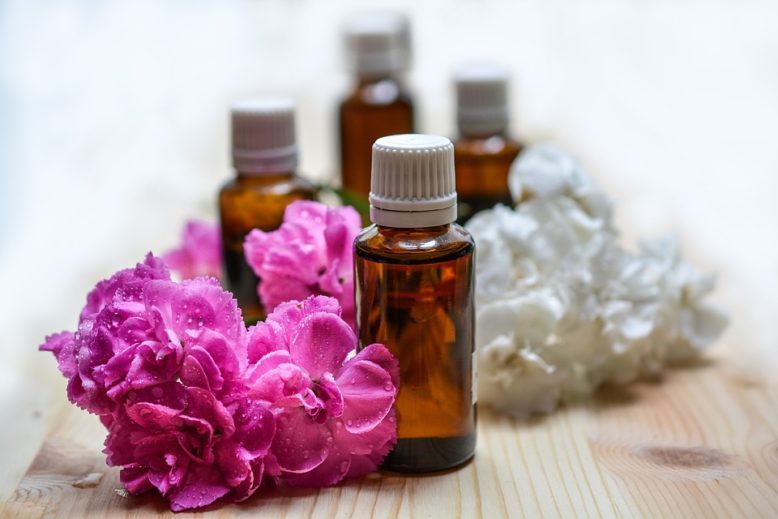
ESSENTIAL OILS
Certain scents can be transporting and, some believe, therapeutic. Essential oils—aromatic compounds extracted from plant material—are used in aromatherapy to treat the mind and body, and have seen a rise in popularity in recent years.
Tiffany Soska, an aromatherapy instructor at Lourdes Institute of Wholistic Studies in Camden, says it’s best to use essential oils through inhalation or topical application—not ingestion. Soska advises adding 3-5 drops of essential oils to 100 milliliters of water in a diffuser, or 2 drops per teaspoon in a carrier oil such as grapeseed or almond oil.
Here’s a guide to some of the most popular essential oils:
Lavender: Perhaps the best known, this scent is used for relaxation and sleep, and has been shown to reduce anxiety.
Tea Tree: Commonly used for rashes, insect bites, nail fungus and head lice through topical application.
Frankincense: Derived from a tree resin, frankincense helps relieve chronic stress and anxiety, skin diseases, coughs and colds.
Peppermint: A stimulant, peppermint oil helps induce alertness, and can be used for headaches, nausea, coughs, fatigue and travel sickness.
Orange: Nice and bright, orange is uplifting and energizing. It is also a topical anti-inflammatory and relaxes muscle spasms.

Bach flower essences. Photo courtesy of Pexels.
FLOWER ESSENCES
Sometimes called miracle water, flower essences are a popular alternative treatment for emotional healing and mental well-being. Unlike essential oils, flower essences are odorless, don’t contain plant material and are made to be ingested. The flower essence is extracted with water and believed to contain the energetic imprint of the flowers. The intent is to address emotional symptoms, not physical.
The flower essences you’re most likely to encounter are based on the Bach flower-remedy system, named for Dr. Edward Bach, the man who popularized the treatments in the early 20th century.
“Simplicity is a core principle of the Bach flower-remedy system,” says Beth O’Boyle, who offers flower-essence therapy at Hudson Healing Arts in Hoboken. “You don’t need to overcomplicate them.”
O’Boyle stresses that there’s no need to hold back with flower essences. In fact, she says, “People tend to under-use them.” O’Boyle recommends adding two drops in water and sipping until you feel better. Here are several flower essences she recommends starting with:
Gentian: For feelings of discouragement, disappointment and lack of confidence.
Walnut: Helps calm anxiety around periods of change.
Aspen: Soothes jittery feelings and helps ease fears and anxieties that cannot be explained.
Holly: For sharp anger or feelings of jealousy.
Larch: Bolsters courage and is useful when you need an extra dose of self-confidence.
Rescue Remedy: A combination of five different flower essences, Rescue Remedy can help provide calmness and stability in emergency or stressful situations. “I don’t leave home without it,” says O’Boyle.




Great article! Essential oils can provide natural alternatives to manage many diseases like sinus problems, arthritis and depression. If taken in the right amounts, they can help to manage symptoms for the long-term period too. It is important to get the right product though; storing them properly is essential to preserve their properties.